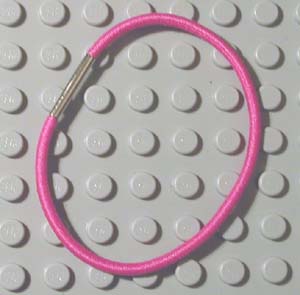The internet can be a dangerous thing. I my quest for knowledge, and the desire to improve my skills, I decided to get back to basics. Stance, grip, bridge and stroke. I watched countless videos and read oogles of posts and articles. My quest for the perfect everything was is the key to taking my game to the next level.
I did a self evaluation and found that I grip the cue at, or very near, the butt end and my stroke was not what it needed to be. I was convinced that my stroke would never improve because of the grip. Almost every player I saw was at a minimum of 2 hand lengths up. Now, I'm playing off the wall and maybe these house cues are shorter so I found the longest ones I could and my hand still when to the bitter end... a bad habit I needed to break.
I started moving my hand up while at the same time focusing on my stroke and played for several days this way... I need to make this a habit... natural. Just the opposite was happening. I was getting crushed, like I was playing a table with no pockets. Determined that this was clearly a week point for me I pushed on, that is until my wife stepped up to me and told me "stop it you moron!". So, at her urging, I reluctantly went back to my old bad grip. I was doomed.
Well, my stroke is light years ahead of where it was a year ago thanks to that little exercise in futility. Last night was an example. People that I play on a regular basis are commenting on how good I'm getting (it's going to my head and I need to be humbled). Played a pretty sharp guy last night and took 2 of 3. I won 2 because of brilliant 11th hour kicks by me (kudos to the starter of the kick box thread, I own you rep).
So, not everything your taught or discover is right for you. I'll continue to try new things, experiment and practice. Take what feels right/natural and added it as a weapon.
Thanks for a great forum, loaded with great people, and wisdom well beyond their year!
I did a self evaluation and found that I grip the cue at, or very near, the butt end and my stroke was not what it needed to be. I was convinced that my stroke would never improve because of the grip. Almost every player I saw was at a minimum of 2 hand lengths up. Now, I'm playing off the wall and maybe these house cues are shorter so I found the longest ones I could and my hand still when to the bitter end... a bad habit I needed to break.
I started moving my hand up while at the same time focusing on my stroke and played for several days this way... I need to make this a habit... natural. Just the opposite was happening. I was getting crushed, like I was playing a table with no pockets. Determined that this was clearly a week point for me I pushed on, that is until my wife stepped up to me and told me "stop it you moron!". So, at her urging, I reluctantly went back to my old bad grip. I was doomed.
Well, my stroke is light years ahead of where it was a year ago thanks to that little exercise in futility. Last night was an example. People that I play on a regular basis are commenting on how good I'm getting (it's going to my head and I need to be humbled). Played a pretty sharp guy last night and took 2 of 3. I won 2 because of brilliant 11th hour kicks by me (kudos to the starter of the kick box thread, I own you rep).
So, not everything your taught or discover is right for you. I'll continue to try new things, experiment and practice. Take what feels right/natural and added it as a weapon.
Thanks for a great forum, loaded with great people, and wisdom well beyond their year!
